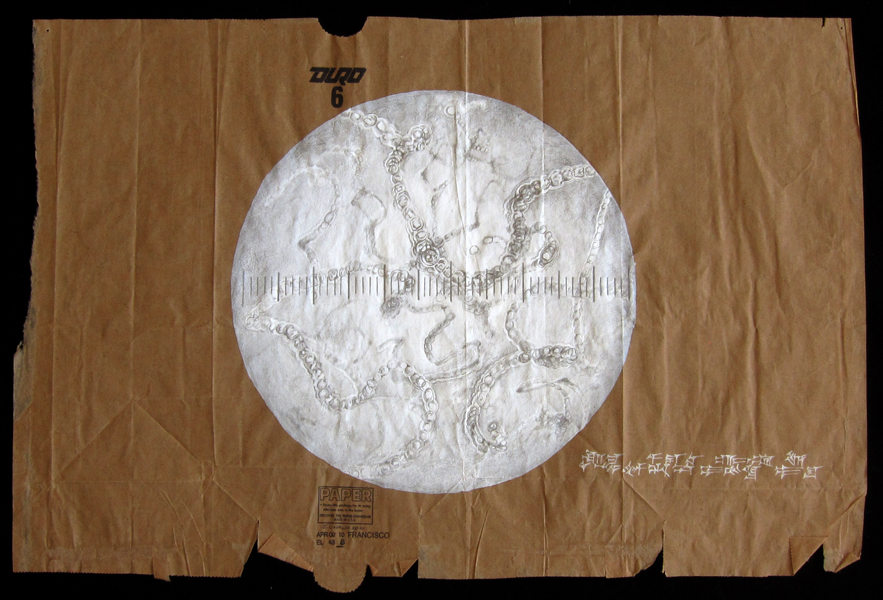
I shall change the order of things, 1.222- 223
Silverpoint and white ink on prepared ground on found paper
20" x 13"
Translation of the cuneiform: "[…] … I shall change the order of things, [the one] born in the wild is mighty, he has strength."
The image is of microscopic bacteria called cyanobacteria. It is believed that due to the metabolic activity of cyanobacteria 2300 million years ago, the earth's atmosphere gained free oxygen, making life possible. Cyanobacteria have survived every ice age, the K/T extinction event, the world-changing volcanic eruption on bronze age Thera, and other catastrophic natural disasters. They have been found living in places where no other life exists, including in Antarctica.
In the story of Gilgamesh, these are the words of Enkidu. He died first – was he strong? – but his death made the second half of the story happen, changing the order of things.
ABOUT THE GILGAMESH SERIES
This series of 10 drawings is based on the ancient Mesopotamian story of Gilgamesh. "Gilgamesh" appears on cuneiform tablets (an ancient form of writing on clay) dating to about 2000 B.C.E. It relates an epic journey made by the King of Uruk, Gilgamesh, and his friend, Enkidu. The story is also about what is and is not eternal and significant. These 10 drawings, like the story, are about permanence versus transience, and about trying to determine what is important and what is inconsequential.
The drawing substrate - paper bags - comment on disposability and value. Like excavated archaeological material (most of which is ancient refuse), when the paper bags are put into a different context, their significance changes. Also like excavated archaeological material, the paper bags will deteriorate over time. In this way, the drawings are like the ancient tablets on which the story of Gilgamesh was written.
All of the drawings in this series are made by drawing with sharpened silver or copper wire. The lines are created by transfered metal particles, which means that the drawings themselves will tarnish with time, like archaeological objects.



